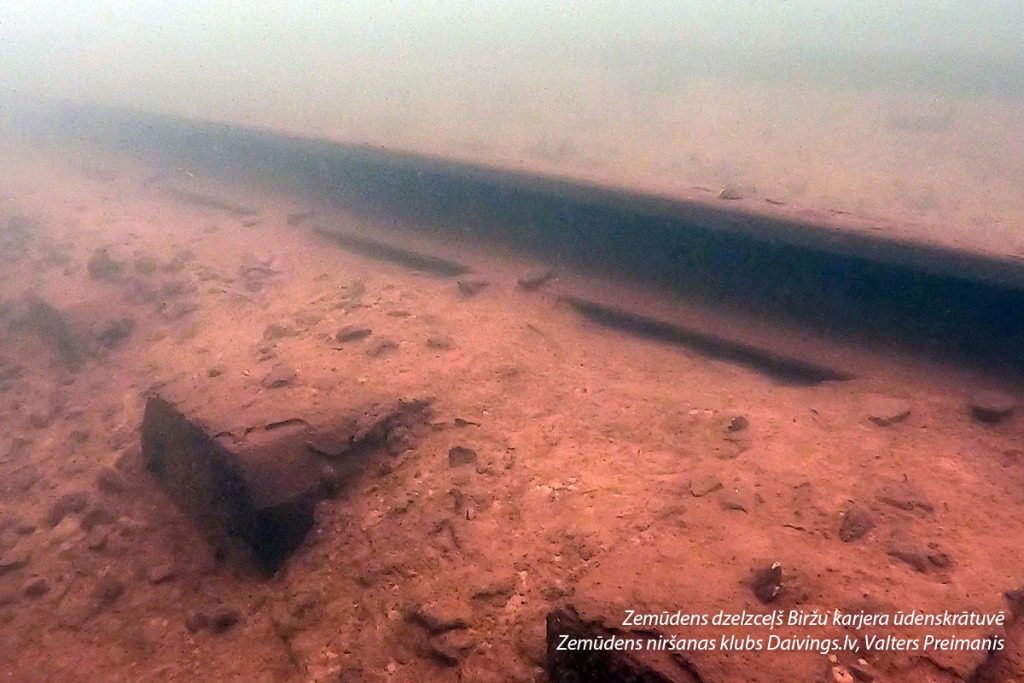Table of Contents
Exchange career history
Back in 1984, dolomite began to be mined at this site because Raja quarry, which was located near Jēkabpils, was almost exhausted in terms of resources, and the dolomite plant, called "Dolomite", located in Jēkabpils, needed dolomite to be able to operate. The dolomite in this quarry is very dense, it was obtained by blasting methods. It was transported by truck to the ramp, where dolomite was loaded from it into special platforms on the railway track. Dolomite was led to a dolomite plant, where it was crushed and further, mostly used as a way to strengthen the foundations, as well as in various building materials.

Historical evidence in the form of photographs has been obtained from people who have ever worked in both a quarry and a dolomite factory. One of the pictures depicts a locomotive that ran along the Biržai quarry railway - to a quarry, from a quarry to a dolomite factory in Jēkabpils.

Due to the specifics of the quarry, there were two large pumps in the quarry that pumped water so that it would not flow. One of them was located on one side of the quarry, where the depth of the quarry is about 1.20 m, and the other was located at the deepest point of the quarry, where the depth reaches 12 m. In all other quarry locations, its depth is approximately 5 m. According to legends, the company did not pay the bills and the electricity was cut off, resulting in the quarry flooding in a relatively short time. Dolomite was mined here from 1984 to 1993, when the dolomite plant was privatized. Due to the fact that the plant was privatized and the economic situation in the country was not excellent, it was considered that the extraction of dolomite in this quarry was no longer profitable and its extraction was stopped.

The railway started from the edge of this quarry
What can you see while diving in the Exchange's career?
When diving into the underwater world of this quarry, it is possible to see railway sleepers, but as far as they are located in the upper layer of the water body, where the water temperature is warm enough and water plants and grass have multiplied, they have grown into grass.
At a depth of two meters, the large water grass disappears, the vegetation changes a bit and the railway tracks can be seen overgrown with a thick layer of sod. Shrubs have overgrown on both sides of the railway because they were not cut down and are now under water, forming a peculiar underwater kingdom.
The entire railway infrastructure as it used to be is still there. The railway tracks are located on sleepers, it is also possible to see a switch with all direction indicators, which divides the railway tracks into two parts. There is a building made of sleepers. It has two floors, where you can dive on the first floor and dive on the second floor. In this building, quarry railway workers kept tools.

Diving in Biržai quarry reservoir
Daivings.lv forum participants will visit the Exchange's career in 2008 and 2021. Picture in the picture, who was made after diving in Biržai career in 2008, can be seen the most active divers of the forum - Ingrīda P., Normunds P., Valters Preimanis and Andris Vanags. Together we study the underwater part of the Biržai quarry.

Next to the building is a rather large tank, which stored salt water, which was used to sprinkle the platforms so that the dolomite does not freeze during the winter. There is also a floodlight tower, which illuminated part of the territory, as well as a guard house. There was also an excavator bucket of impressive size and weight, which was highlighted and is no longer in this career. It was highlighted with the idea that it would be used usefully for the needs of Pļaviņas HPP excavators, but its dimensions were inappropriate.

Over time, quarries have developed islands and peninsulas. They are shown in the quarry image from above.
- Start of the railway GPS 56.422787,25.739452
- Access point GPS 56.418755,25.736465
- Find out more about the popular diving sites in Latvia, here
- Learn to dive together in the diving club "Diving", here
The article about the Exchange quarry was prepared by Cetacea based on the materials collected by Andris Vanags.

